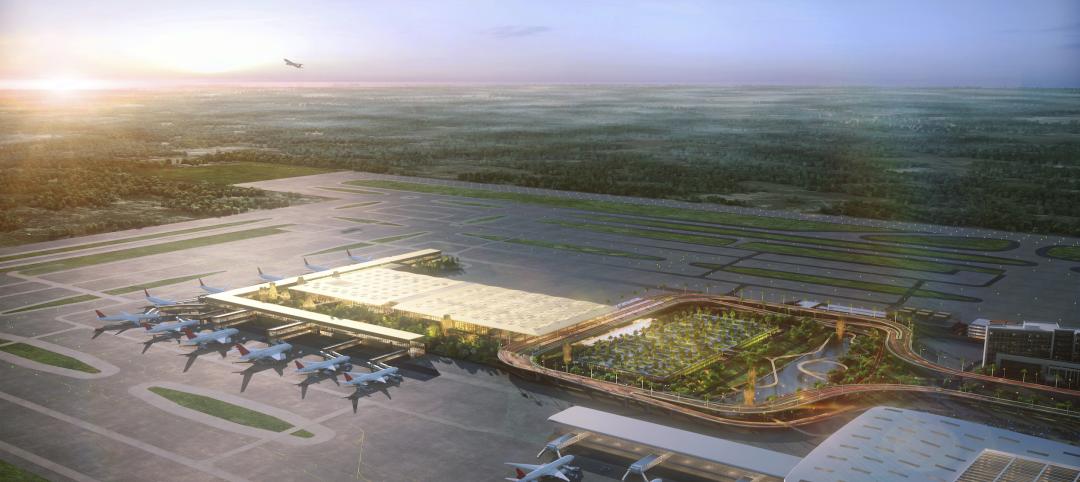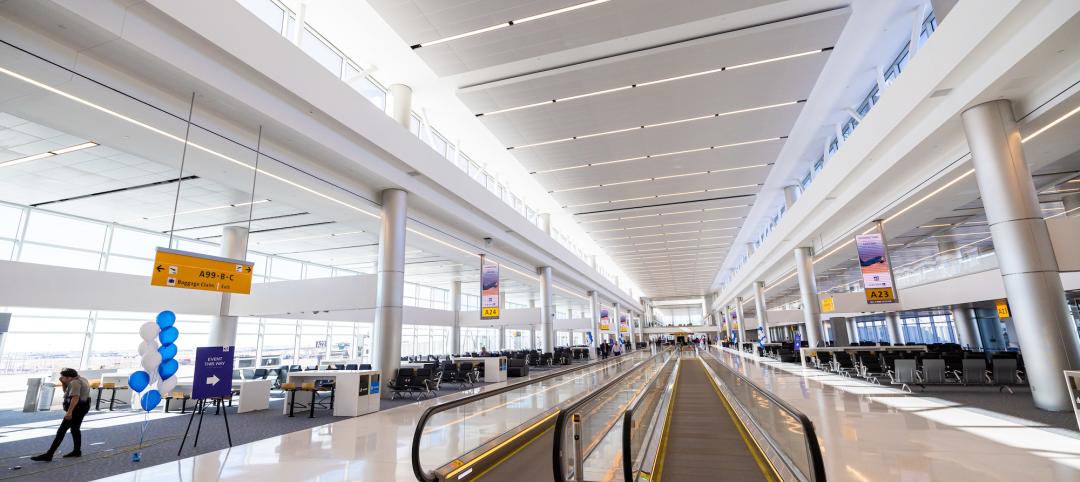America’s crumbling infrastructure might finally be getting the attention and funding it needs. But how best to rebuild that infrastructure, and who will pay for it, are shaping up to be contentious debates among the country’s two political parties and its newly elected president, who has identified infrastructure building as one of his administration’s priorities, and has singled out 50 projects that could receive immediate funding boosts.
President Trump’s team has provided the National Governors Association with a list of 50 “Emergency & National Security” infrastructure projects across the country that are in various stages of engineering, permitting and funding. The document, which the Kansas City Star and other news outlets have obtained and published, estimates that at least half of the $137.5 billion in total investment for those projects would be paid for by private investors. The document estimates that the projects would create 193,350 direct jobs and 241,700 indirect jobs over an indeterminate period of years.
Not surprisingly, Trump favors projects that are upgrading or rebuilding roads, bridges, rail- and waterways, and hydro plants. (At least six projects identified in the document are upgrades of existing systems of locks and dams.) A number of projects, such as the M1-Rail in Detroit and the Second Avenue Subway in New York, are already pretty far along in their engineering, permitting, and financing.
Energy projects are prioritized, too, such as $5 billion for the Chokecherry and Sierra Madre wind farm in Wyoming, and between $4.5 billion and $5 billion for the Atlantic Coast Pipeline that serves multiple utilities in Virginia and North Carolina.
A number of nonresidential construction and reconstruction projects are on the list, including the modernization of Union Station in Washington D.C., an $8.7 billion public-private project that, according to the document, would serve as a model for other multimodal terminals around the country. (The Chicago Union Station Redevelopment would get $1 billion, according to the document.)
Another $972 million would be allocated for a new centralized terminal replacing Terminal A at Kansas City Airport, for which Southwest and other airlines have already committed nearly $1 billion. One billion dollars would go toward expanding Seattle’s Airport. And $1.8 billion would support the St. Louis Airport Commission’s recent approval of a major development project at Lambert-St. Louis International Airport.
This document became public as President Trump, through executive orders, was moving to restart the construction of the Keystone XL Pipeline and the Dakota Access Pipeline, which President Obama halted over environmental concerns.
Another executive order directs federal resources toward building a massive wall along the 1,954-mile U.S.-Mexico border. The Government Accountability Office estimates that a single-layer fence would cost $6.5 million per mile, plus another $4.2 million per mile for supporting roads and fencing. CNN, quoting estimates by civil engineers and architects, reports that a wall made from precast cement panels and reinforced steel supports (not unlike the sound barriers along highways), 20 feet high and five feet below ground, could cost $10 billion and take most of Trump’s first term to complete.
Trump has insisted, both on the campaign trail and in office, that Mexico would pay for this wall. The New York Times this morning reports that Team Trump is considering plans that would divert foreign aid to Mexico toward paying for the wall construction.
Trump contends that the infrastructure spending proposed in the document released to the governors association, which would be primarily in the form of tax credits to investors, would “unlock” $1 trillion in private-sector spending.
Indeed, who pays, and which infrastructure projects get precedence, will be hot topics going forward. The Democrats have unveiled a $1 trillion proposal that relies heavily on new government spending, and is projected to create 15 million jobs over 10 years. Reuters reports that the Senate Democrats’ plan includes $210 billion to rebuild roads and bridges, $110 billion for water and sewage projects, $180 billion for rail and bus systems, and $75 billion to rebuild schools.
That plan has already been rejected by Senate Majority Leader Mitch McConnell, who led the opposition against President Obama’s 2009 economic stimulus legislation that included funding for infrastructure rebuilding. House Speaker Paul Ryan (R-Wis.) is on record saying that any infrastructure plan should have $40 of private-sector spending for every $1 of public spending.
On the other hand, Sen. Chuck Schumer (D-NY), the Senate Democratic leader, has stated that his party can’t accept the tax-credit scheme that Trump has proposed for infrastructure rebuilding, which he characterized as “tax credits for developers.”
Related Stories
Design Innovation Report | Apr 27, 2023
BD+C's 2023 Design Innovation Report
Building Design+Construction’s Design Innovation Report presents projects, spaces, and initiatives—and the AEC professionals behind them—that push the boundaries of building design. This year, we feature four novel projects and one building science innovation.
Airports | Apr 18, 2023
India's mammoth new airport terminal takes ‘back to nature’ seriously
On January 15, 2023, Phase 1 of the Kempegowda International Airport’s Terminal 2, in Bengaluru, India, began domestic operations. The 2.75 million-sf building, designed by Skidmore, Owings & Merrill (SOM), is projected to process 25 million passengers annually, while providing its travelers with a healthier environment, thanks to extensive indoor-outdoor landscaping that offers serenity to what is normally a frenzied experience.
Architects | Apr 6, 2023
Design for belonging: An introduction to inclusive design
The foundation of modern, formalized inclusive design can be traced back to the Americans with Disabilities Act (ADA) in 1990. The movement has developed beyond the simple rules outlined by ADA regulations resulting in features like mothers’ rooms, prayer rooms, and inclusive restrooms.
Airports | Feb 28, 2023
Data visualization: $1 billion earmarked for 2023 airport construction projects
Ninety-nine airports across 47 states and two territories are set to share nearly $1 billion in funding in 2023 from the Federal Aviation Administration. The funding is aimed at help airports of all sizes meet growing air travel demand, with upgrades like larger security checkpoints and more reliable and faster baggage systems.
Intelligent Lighting | Feb 13, 2023
Exploring intelligent lighting usage in healthcare, commercial facilities
SSR's Todd Herrmann, PE, LEEP AP, explains intelligent lighting's potential use cases in healthcare facilities and more.
Giants 400 | Feb 9, 2023
New Giants 400 download: Get the complete at-a-glance 2022 Giants 400 rankings in Excel
See how your architecture, engineering, or construction firm stacks up against the nation's AEC Giants. For more than 45 years, the editors of Building Design+Construction have surveyed the largest AEC firms in the U.S./Canada to create the annual Giants 400 report. This year, a record 519 firms participated in the Giants 400 report. The final report includes 137 rankings across 25 building sectors and specialty categories.
Giants 400 | Feb 6, 2023
2022 Reconstruction Sector Giants: Top architecture, engineering, and construction firms in the U.S. building reconstruction and renovation sector
Gensler, Stantec, IPS, Alfa Tech, STO Building Group, and Turner Construction top BD+C's rankings of the nation's largest reconstruction sector architecture, engineering, and construction firms, as reported in the 2022 Giants 400 Report.
Cladding and Facade Systems | Dec 20, 2022
Acoustic design considerations at the building envelope
Acentech's Ben Markham identifies the primary concerns with acoustic performance at the building envelope and offers proven solutions for mitigating acoustic issues.
Digital Twin | Nov 21, 2022
An inside look at the airport industry's plan to develop a digital twin guidebook
Zoë Fisher, AIA explores how design strategies are changing the way we deliver and design projects in the post-pandemic world.
Giants 400 | Nov 14, 2022
Top 65 Airport Terminal Engineering + EA Firms for 2022
AECOM, Jacobs, Arup, and Burns & McDonnell head the ranking of the nation's largest airport terminal engineering and engineering/architecture (EA) firms for 2022, as reported in Building Design+Construction's 2022 Giants 400 Report.

















